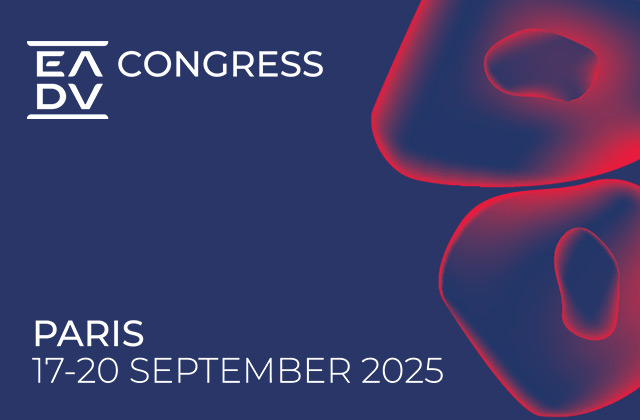
Another year has passed and a new one stretches before us. The oncology market continues to be a dynamic and interesting place, so 2024 should bring some interesting developments. However, before we peer ahead and make predictions for the coming year, we decided to look back at the predictions we made almost one year ago—for 2023—and assess our accuracy.
In our oncology market outlook for 2023, we made five broad predictions. Now, let’s revisit each one…
Prediction #1 – Cancer vaccines will come into focus.
Last year saw a lot of action in cancer vaccine development. In our 2023 predictions, we mentioned that the field had received renewed attention due to some of the high-profile COVID vaccine players like Moderna and BioNTech advancing their highly anticipated cancer vaccine programs.
We have previously highlighted that BioNTech had entered into a multi-year agreement with the UK government to provide 10,000 patients with personalized mRNA cancer therapies by 2030. The agreement will accelerate clinical trials for personalized mRNA immunotherapies and provide patients with early access to treatment. BioNTech will build an R&D hub in Cambridge as part of the partnership. We had also pointed out that the FDA had granted Moderna’s and Merck’s mRNA-4157 vaccine breakthrough status, designed for the adjuvant treatment of patients with resected high-risk melanoma.
Overall, we predicted that 2023 would bring further advancements and an increase in partnering activity in vaccines due to the high amount of attention on the space. We remained cautiously optimistic—with an emphasis on “cautiously”—about cancer vaccines, given a long history of clinical failures with these modalities.
Since then, both Moderna and BioNTech have continued to be in the news. In September, Moderna and Immatics partnered on a cancer vaccine deal worth $1.8 billion. Both companies will bring existing programs to the collaboration, with Immatics’s IMA203 PRAME TCR-T planned to be combined with Moderna’s investigational PRAME mRNA cancer vaccine for the treatment of advanced solid tumors and chronic lymphocytic leukemia (CLL).
In October, BioNTech announced that it had treated the first subject in a Phase II trial evaluating its cancer vaccine (autogene cevumeran), Tecentriq® and chemotherapy versus chemotherapy alone. The trial builds on promising results from a Phase I study where the vaccine led to impressive results, with nearly half of the pancreatic cancer patients being cancer-free 18 months later. The successful outcomes have prompted the global randomized follow-up trial with a planned enrollment of 260 patients.
In June, Moderna and Merck reported updated findings from the KEYNOTE-942 Phase IIb study. In that study, the personalized cancer vaccine, mRNA-4157 / V940, in combination with Keytruda® (pembrolizumab), reduced the risk of distant metastasis or death by 65% compared to Keytruda alone, in patients with high-risk melanoma. A Phase III study is expected to be initiated this year. More data was released in December, demonstrating continued improvement in recurrence-free survival and distant metastasis-free survival in patients with high-risk stage III/IV melanoma following complete resection vs. Keytruda at three years. This is further follow-up from initial data released at ASCO and was highlighted in our ASCO review.
In addition to the items above, there were several other noteworthy advances in cancer vaccines during 2023:
- In April – Nykode Therapeutics advanced its plasmid-DNA-based cervical cancer vaccine. The vaccine, administered alongside Roche’s Tecentriq (atezolizumab), was given to 52 patients monitored over a year, who reported a median overall survival of 16.9 months.
- In June – Transgene announced positive Phase I results for its viral vector-based, personalized TG4050 cancer vaccine in HPV-negative head and neck cancer. The data showed that TG4050, when administered as an adjuvant treatment in surgically-resected head and neck cancer patients, successfully prevented disease relapse.
- In September – OSE Immunotherapeutics reported positive findings from a Phase III trial of its cancer vaccine Tedopi (OSE-2101), designed for advanced NSCLC. Tedopi is a DNA-based vaccine and a blend of antigenic peptides intended to activate tumor-killing T cells, which in this case are common in NSCLC patients with the HLA-A2 phenotype. While the vaccine is still being tested in the clinic, it is approved for compassionate use in France, Italy, and Spain.
Prediction #2 – Radiopharmaceuticals will further mature.
As anticipated, the radiopharmaceuticals segment continued to grow in 2023 with multiple acquisition deals and increased investment from the venture community. In many ways, 2023 was the year that radiopharmaceuticals for oncology entered “prime time.”
Many large pharma companies acquired radiopharmaceutical companies to strengthen their oncology portfolios and include next-generation radioligand therapies. For example:
- In September – Eli Lilly (Lilly) invested as part of the $175 million Series B financing round for Mariana Oncology, for its lead preclinical drug for small cell lung cancer, MC-339.
- In October – Lilly announced its acquisition of POINT Biopharma for $1.4 billion, further strengthening its pipeline in radiopharmaceuticals and decisively positioning itself as one of the leaders in the space.
- In December – BMS entered the radiopharmaceutical field with its $4.1 billion acquisition of RayzeBio. This transaction currently stands as one of the biggest deals in the radiopharmaceutical field.
- There was consolidation among smaller players as well. For example, Telix Pharmaceuticals plans a $125 million acquisition of radiopharmaceuticals company, QSAM.
With the activities from Eli Lilly and BMS, we now have 4 large pharma companies (including Novartis and Bayer) with significant stated commitments to radiopharmaceuticals for oncology, clearly indicating a shift in enthusiasm for radiopharmaceuticals in the market.
Several notable clinical updates also occurred, which helped support enthusiasm for the market:
- In September – Novartis’ radioligand therapy, Lutathera demonstrated statistically significant and clinically meaningful progression-free survival in first-line advanced gastroenteropancreatic neuroendocrine tumors (GEP-NETs).
- In December – Lantheus and POINT Biopharma announced positive results from the pivotal SPLASH trial in metastatic castration-resistant prostate cancer (mCRPC). The phase 3 study of 177Lu-PNT2002 demonstrated statistically significant improvement in radiographic progression-free survival (rPFS).
We had also previously reported several other bits of relevant clinical news in our summary articles for the ESMO, ASCO, and ASH annual meetings:
- Sequential dosing of two PSMA targeting agents, 225Ac-591 (a mAb linked to a radioactive alpha emitter) and 177Lu-PSMA (a small molecule linked to a radioactive beta emitter), led to 50% reduction of PSA in 61% of 2L+ mCRPC patients.
- The combination of 177Lu-PSMA and olaparib in prostate cancer patients resulted in a 50% (or greater) reduction in PSA in 66% of the patients (44% of patients experienced a 90% reduction in PSA levels).
- The study of Novartis’s Pluvicto in pre-chemo prostate cancer missed on its overall survival endpoint in the PSMAfore study.
Finally, overall venture financing for innovative radiopharmaceutical drugs witnessed an approximately 550% increase from $63 million in 2017 to $408 million in 2023 (total deal value in the US), according to GlobalData’s Pharma Intelligence Center deals database. This suggests that the radiopharmaceuticals revolution is only getting started.
Prediction #3 – The commercial success of bi-specifics will significantly dampen enthusiasm for allogeneic CAR-T approaches.
Bi-specifics continued advancing with multiple approvals. In June, the FDA approved Genentech’s Columvi™, a bi-specific for relapsed / refractory (R/R) diffuse large B-cell lymphoma. Later in the summer, FDA granted accelerated approval to Janssen’s Talvey™ for R/R multiple myeloma (MM) and Elrexfio’s / Pfizer’s elranatamab-bcmm for MM.
Three more new approvals are expected in the near-term. First, Regeneron’s pivotal data for linvoseltamab (BCMAxCD3) demonstrated early, deep, and durable responses in patients with heavily pre-treated multiple myeloma, and should likely support its approval. Regeneron’s other bispecific antibody, odronextamab, presented updated data at the 2023 ASH meeting ahead of its March 2024 PDUFA date, and will likely be the third CD20 bispecific approved for non-Hodgkins lymphoma.
As reported previously in our ESMO summary, Amgen presented positive data from its pivotal phase 2 trial for tarlatamab. Tarlatamab is a DLL-3 targeted, T-cell engager (BiTE) and demonstrated impressive and durable response rates in patients with small cell lung cancer. If approved, this would be the first T-cell redirecting bispecific approved for a solid tumor. In its Dellphi-301 study in third-line small cell lung cancer (SCLC), tarlatamab showed an impressive response rate of around 40%, which is likely sufficient to support an accelerated approval in this indication. These data were called “a watershed moment.”
As mentioned in our ASCO summary, we believe the next step for the field will be combinations, which will allow bi-specifics to potentially push efficacy higher to where they can emerge as true efficacy competitors for the CAR-Ts. Data at ASCO revealed another appealing element of bispecifics: their ease of use as part of combination approaches. Data in multiple myeloma demonstrated that the combination of Janssen’s bi-specific, talquetamab, combined with daratumumab, resulted in complete response (CR) of 52% in heavily pre-treated patients.
In addition, a combination of teclistamab (BCMAxCD3) and talquetamab (GPRC5xCD3) delivered responses that are comparable with CAR-Ts. This combination demonstrated CR of 40% and stringent CR (sCR) of approximately 18%, falling short of ide-cel at 29% but somewhat lagging behind cilta-cel’s 78%.
At ASH, a phase 1b study of glofitamab (Glofit) + R-CHOP and Glofit + Pola-R-ChP showed high response rates. Glofit + Pola-R-CHP showed a 100% overall response rate (ORR) and 91.7% complete metabolic response (CMR) rate, as well as increased ctDNA clearance (with a manageable safety profile). Based on these data, a Glofit + Pola-R-CHP phase 3 study has been initiated.
Also at ASH, results from the EPCORE NHL-5 study evaluating epcoritamiab + lenalidomide in R/R large B-cell lymphoma (LBCL) showed strong activity (ORR/CR 72%/53%) with a manageable tolerability profile (11% G3/4 CRS). Finally, a phase 1/2 trial of mosunetuzumab + Polivy (polatuzumab vedotin) showed a strong response rate of 59.2% in patients with R/R LBCL who were elderly, unfit or frail.
While our focus was on T-cell re-directing antibodies, other bi-specific agents have also shown promise:
- AstraZeneca’s volrustomig (a PD-1 and CTLA4 bispecific) presented intriguing data in first-line renal cell carcinoma (RCC) at ESMO, suggesting that the team has managed to overcome initial toxicity concerns and has a likely path to market. AstraZeneca has initiated two pivotal Phase 3 studies for this therapy.
- Data was also presented for the PD-1 /TIM3 bispecific, sabestomig, which showed some clinical activity. However, it’s unclear if this will be sufficiently active as a monotherapy.
While it is not possible to specifically quantify the “reduced enthusiasm for allogeneic approaches,” avid watchers of the space will surely agree that consistent with our predictions, allogeneic CAR-T approaches have generally fallen out of favor (for now). In our opinion, increased response durability, as well as markedly improved safety profiles will be required for next gen allo approaches to make a comeback.
Prediction #4 – Antibody drug conjugates (ADCs) will continue to see clinical and commercial success.
This prediction worked out very much as we expected. Antibody drug conjugates (ADCs) have been much sought-after through investments of late, with large pharma companies eyeing therapies developed by various biotech firms with the intent of eventually nabbing them.
The biggest deal of the year was Pfizer buying Seagen for $43 billion. Showing its almost insatiable appetite for ADCs, in December, Pfizer also entered into an exclusive license agreement with MA-based Nona Biosciences to develop the mesothelin-targeting antibody-drug conjugate, HBM9033 in solid tumors. Under the deal, Pfizer will pay Nona $53 million in upfront and near-term payments and will pledge up to $1.05 billion in certain development and commercial milestones. Nona will also be eligible for tiered royalties on net sales, ranging from high-single digits to the high teens.
In another big deal, AbbVie paid $10 billion to acquire ImmunoGen, and its ovarian cancer treatment Elahere.
Pfizer and Abbvie were hardly the only players in action, and a large number of other companies were also very active in business development on the ADC front:
- Daiichi Sankyo and Merck signed a $22 billion commercialization agreement for three of Daiichi Sankyo’s ADC candidates.
- Synaffix executed a $2 billion license agreement to provide Amgen access to its proprietary ADC technologies.
- AstraZeneca and KYM Biosciences entered into a global $1.1 billion exclusive license agreement for CMG901, a potential first-in-class ADC targeting Claudin 18.2 for gastric cancer.
- LegoChem Biosciences Inc. signed a $1.7 billion deal to out-license out its proprietary ADC candidate to Jassen Biotech.
- GSK entered into an exclusive license agreement with Hansoh Pharmaceutical Group for its HS-20093 ADC candidate, with payments of up to $1.71 billion depending upon milestones being met.
- SystImmune and BMS agreed to co-develop and co-commercialize BL-B01D1 in the United States. SystImmune will retain exclusive rights in mainland China and BMS will gain an exclusive license in the rest of the world. The deal is worth $8.4 billion.
- Tubulis and BMS entered into a $1 billion license agreement to develop differentiated ADCs.
- C4 Therapeutics announced a licensing and research collaboration with Merck KGgA to discover and develop Degrader-Antibody Conjugates (DACs), showing innovation is increasingly moving towards novel linkers and payloads.
The business development activity has been driven by increasingly compelling data coming from the clinic. During 2023, we extensively covered data updates from ADCs in our ASCO and ESMO summary articles.
- The DESTINY PAN-TUMOR02 LBA3000 trial demonstrated a compelling 37% overall response rate (ORR) in patients with IHC 3+ across a variety of tumor types including cervical, endometrial, ovarian, biliary, pancreatic, bladder, and others.
- ELAHERE (mirvetuximab soravtasine), an anti-Folate receptor alpha targeting ADC, showed interesting results for media progression-free survival (mPFS) and median overall survival (mOS) data in patients with platinum resistant disease.
- There were positive results from the phase 3 TROPiCS-02 trial with sacituzumab govitecan (Trodelvy®), which showed a PFS and OS benefit in patients with HR+/HER2‒ metastatic breast cancer (when compared to chemotherapy).
- Padcev® data (EV-302) showed a transformational improvement in bladder cancer care via a groundbreaking phase 3 study results (EV-302) on Astellas / Seagen’s ADC, Padcev, in combination with Merck’s Keytruda® as a first treatment option for advanced bladder cancer. It doubled the median time patients survived following treatment compared to standard of care with chemotherapy.
- Multiple other positive studies supported the promise of ADCs across several targets, cancer types, and combinations (i.e., immunotherapies). For example, AstraZeneca presented two phase 3 datopotamab deruxtecan (Dato-DXd) studies at ESMO.
- TROPION-Lung01 (Phase 3): Results in the overall population were not great, but a subgroup of patients with non-squamous disease fared better.
- TROPION-Breast01 (Phase 3): It met its primary endpoint, with significantly improved PFS reported with the TROP2-directed ADC, datopotamab deruxtecan versus investigator’s choice of chemotherapy (6.9 months versus 4.9 months).
Prediction #5 – Measurable / minimal residual disease (MRD) measurement and other diagnostics will start to impact patient management significantly.
This is the one prediction where our expectations may have been a bit too optimistic. We believe that we were correct regarding the general trend of increased enthusiasm and adoption of diagnostic approaches, but overall transformation will likely take longer than we had initially expected. Despite relatively underwhelming progress on MRD adoption from our perspective, there were some noteworthy developments, which we describe in three broad areas: Commercialization and Business Development, Regulatory, and Data Updates.
Commercialization and Business Development Activities
In March, NeoGenomics announced the commercial availability of its RaDaR assay, a liquid biopsy test for MRD. Results from the RaDaR test can help clinicians determine whether cancer patients have residual disease after curative intent therapy or surgery.
In April, Quest Diagnostics expanded its capabilities in oncology through the all-cash acquisition of Baltimore’s Haystack Oncology, an early-stage company focused on minimal residual disease (MRD) testing.
Regulatory Activity
In June, the FDA granted full approval to blinatumomab (Blincyto®) for the treatment of CD19-positive B-cell precursor acute lymphoblastic leukemia (B-ALL) that is in first or second complete remission with minimal residual disease (MRD) of 0.1% or more. This setting continues to be the only setting for an MRD-based FDA approval.
At the annual meeting of the American Society of Hematology (ASH) in December, data from the IsKia study, which evaluated isatuximab in newly diagnosed multiple myeloma, were presented, which relies on the MRD negativity status (determined by next-generation sequencing (NGS)) as the primary endpoint. An approval here could represent a significant advance for MRD testing, and its status as a reliable surrogate efficacy marker.
Data Updates
In September, Guardant Health provided an update on the COBRA Study and restated its confidence in its MRD test. The COBRA study was designed to evaluate the effectiveness of using MRD testing to improve clinical outcomes in patients with stage II colon cancer after curative-intent surgery. The final readout is planned for 2026.
One month later, Natera and its collaborators presented MRD data in a total of seven abstracts, including a mini-oral and several poster presentations. The mini-oral presentation featured an updated analysis of more than 2,000 patients from the GALAXY observational arm of the CIRCULATE-Japan trial, one of the largest and most comprehensive prospective studies of MRD testing in resectable colorectal cancer (CRC).
In December, Adaptive Biotechnologies presented new data at the ASH annual meeting that highlighted the clinical relevance of MRD testing with clonoSEQ in patients with blood cancers. Data generated from the University of Chicago found that MRD status determined through clonoSEQ testing of the peripheral blood (PB) early in treatment was prognostic, while stratification by complete response (CR) was not.
As reported previously in our article on key themes from the ASCO annual meeting:
“GRAIL, which markets the Galleri® multi-cancer early detection (MCED) test, presented results from the SYMPLIFY study. It showed the performance of multi-cancer early detection (MCED) testing in people presenting with non-specific symptoms. The results showed that among 6,238 symptomatic patients (”suspicion of cancer” workup), the test had an overall sensitivity of ~67%. Furthermore, the test was able to pinpoint the original site of cancer in 85% of those who showed positive. While these data are impressive, it is unclear if these are compelling enough to drive broad uptake of the test, particularly without widespread payer coverage.”
Summary and Next Steps
Gauging the accuracy of our own predictions in a space that’s as broad, complex, and dynamic as oncology is easier said than done. There’s always room for interpretation, and in some cases, two different individuals could cite separate data points to support divergent conclusions. Overall, however, 2023 turned out much like we thought it would. If we had to give ourselves a grade, we think an A- would be appropriate. The cancer vaccines, bi-specifics, ADCs, and radiopharmaceuticals delivered largely in line with our predictions, even though the MRD revolution did not materialize quite to the extent that we expected. Where these fields go next will be interesting to watch. In our next article, we’ll look ahead to the rest of 2024. We’ll outline several trends that we think will shape the oncology market in the coming year and make some predictions about how we think the market will progress. Stay tuned!







